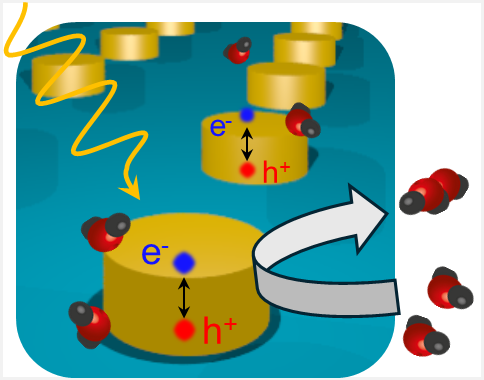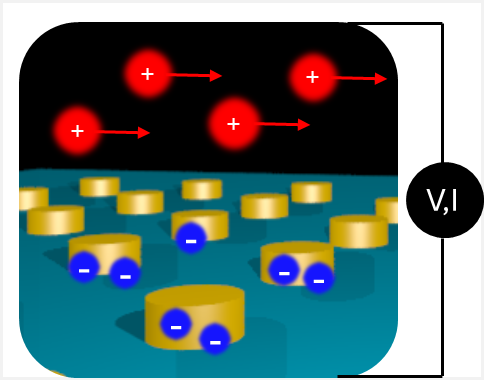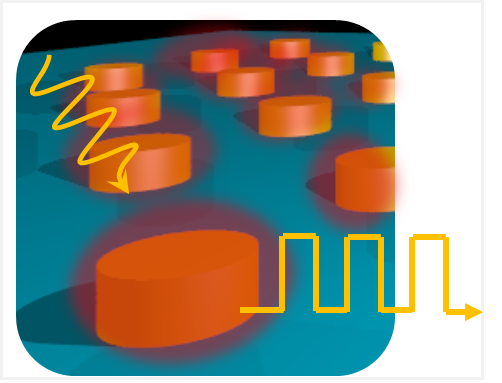Research at LNET focuses on nanophotonics for energy. Our goal is to exploit its full technological potential for advanced energy device architectures and new photonic functionalities. In particular, we leverage nanophotonic design to couple light to molecular dimensions, exploring novel light-matter interactions in nanoconfined solids and/or liquids and achieving control of charge-transfer, ion-transport and heat-generation processes.
By developing highly controlled experimental platforms, which can be coupled with quantitative theoretical modelling, and by bridging micro- and macro-scale characterization methods, we aim at advancing the fundamental understanding of emerging energy conversion pathways and at demonstrating proof-of-concept devices for sustainable energy generation/storage and active photonic components.

Non-equilibrium charge carriers generated in plasmonic nanostructures enable ultra-fast photodetection and alter the selectivity of chemical reactions. We explore the fundamental properties of hot carriers as well as their potential for plasmonic catalysis and advanced energy-storage systems, such as light-rechargeable redox-flow batteries.

Nanostructured materials enhance electrokinetic interactions with water, resulting in the conversion of fluid flow over a charged surface into voltages and currents, a phenomenon recently termed hydrovoltaic effect. We explore how electron/ion coupling and photogating effects control the performance of evaporation-driven hydrovoltaic devices, towards exploiting these safe, cheap, and passive devices for widespread energy production.

Light absorption in optical nanoantennas entails fast heat dissipation, resulting in strong temperature gradients at nanoscale dimensions. We study photothermal energy conversion in plasmonic and dielectric nanoresonators and we exploit it to realize unique functionalities such as self-healing films and tunable metasurfaces.